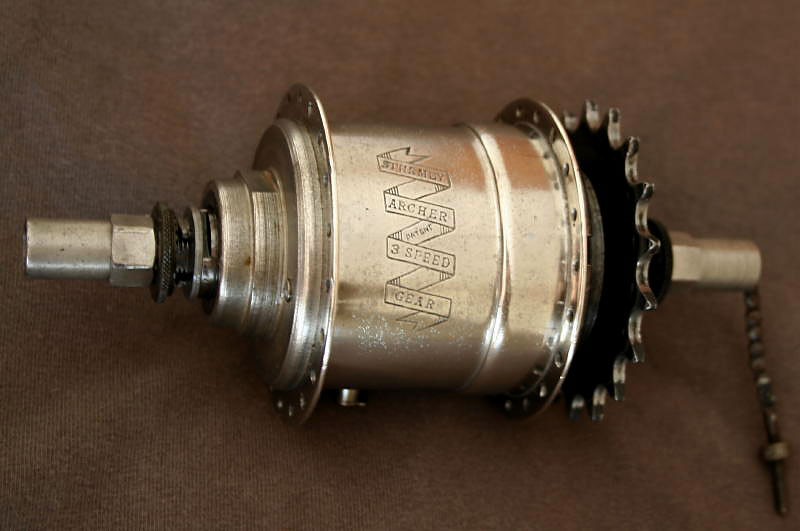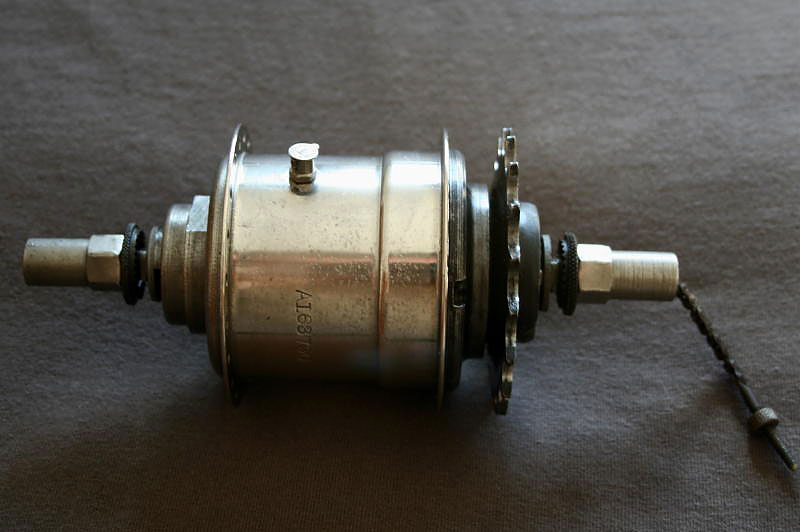|
Raoul Delmare's Sturmey-Archer Hub - Story of the Restoration - "Before" Photos
|
|
|
|
|
|
|
|
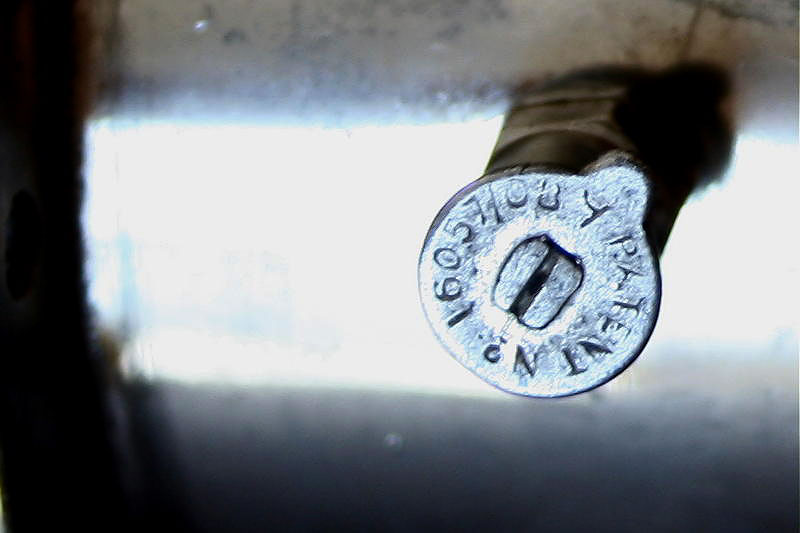 |
|
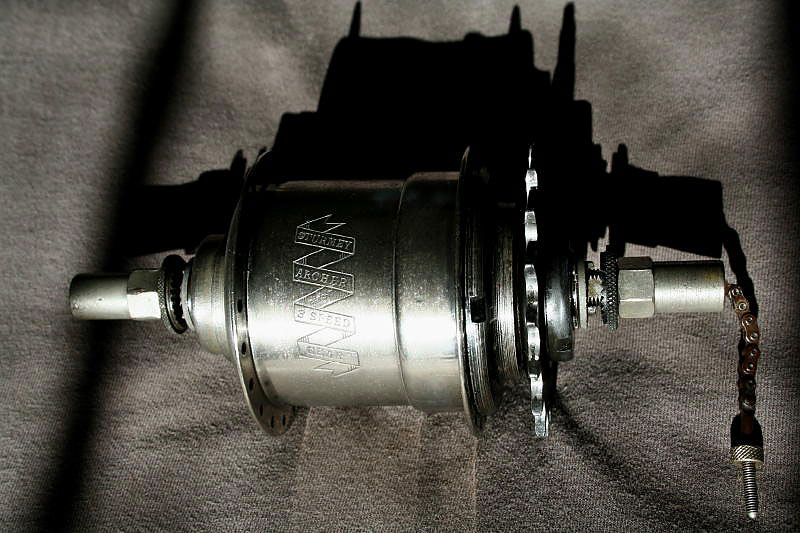 |
|
|
|
|
|
"Before"
photos follow the text below
|
|
|
Did I ever send you an update on that very vintage S. A. hub ? I was very lucky to get to buy this hub from Jim Langley. I'm grateful that he was willing to go to some extra trouble, searching for the original nuts, the original "indicator spindle and chain", and a beautiful pair of deluxe washers which may or may not be original. It's wonderful that these small parts are still with this hub! And speaking of respect for fine old items, when it came to working on this hub, I decided to completely avoid harsh solvents. I decided to use modern Automatic Transmission Fluid. This modern fluid is odorless, which is very nice. And while it's thin, and it penetrates, it's still a lubricant. Sounds great in theory! Here's how it stands. I got out a new and un-opened quart of A.T.F. , automatic transmission fluid. It was the pretty colored red stuff, the "Ford Type". I dribbled a fair amount of the fluid into the hub. I worked things around a bit. I put more inside the hub. I dribbled a fair amount of the fluid onto the outside of the hub. I left the hub sitting in the pan that I'd used to catch the drips. I left it for a week or two. It was out in the garage, where the temperature changes went from about 65 degrees down to about 15 degrees and back up to about 50 degrees. I thought the temperature swings might just have a tiny effect in loosening the old crud. I came back. I dribbled a bit more A.T.F. into the hub. I wiped a bit of the surface crud off of it. I put it back in the pan, but made sure it was inverted from its previous soaking position. And lastly, I "basted" the outside of the hub with the A.T.F . I left it soaking another two or three weeks. Then, I brought it inside the house, to a warm spot near a hot air vent. There was almost ZERO smell from the A.T.F. ! So I had no problem letting it warm for a few days, perhaps a week. I "basted" it with the fluid once or twice a day. And then I decided to be serious about it. I got out a very big roll of white paper towels, a plastic bag to put the used paper into, a very soft old toothbrush, some tooth-picks, and put on a pair of latex gloves. I sat down and spent a few hours. I must have spent more than 12 hours, in three sessions, over two days. I used a plastic syringe this time, to inject the fluid into the hub. Much better idea !!! After I injected more than 15cc of fresh fluid, it finally started to drip out from the inside. I realized that my earlier efforts had not really put a large amount inside. I'd managed to get maybe two or three cc's inside, by dripping it into the little oil port. But it needed a large amount before the stuff started running out from the inside. What came out was nasty ugly yuck. But the hub worked smoothly the whole time. It's not as if it had any destructive grit inside. But what came out was certainly an opaque black-gray. And what came out smelled of ancient petroleum. I worked the mechanism, and injected more fresh fluid, over and over and over. Finally what came out was dirty red, not the opaque black-gray. Then I began on the outside. I could not believe how solid some of the old crud was . Some of it wiped right off. Some of it was just like black concrete ! I finished the cleaning by using a straight pin. The QUICKEST way to get some of the stuff off was to flake it off with a straight pin. Now seriously, I made sure the pin was DULL before I started ! And I was very careful not to cause any scratches with the straight pin. Even though it was the quickest way, it still took time. The straight pin was the only way to clean the lettering, especially the serial number. And actually, I began with the paper towels, quickly switched to the tooth-picks, and then went and found the soft old toothbrush. I tried NOT to use the toothbrush. I knew there was a risk of causing scratches. But I really needed that toothbrush. I was very careful in using it. Then I went looking for a good straight pin. The straight pin, at the end, was a huge help. Then I let the hub sit, clean and dry, and draining from the inside, for a couple of days. What I thought was the final step was the use of genuine Simichrome Polish. I used more of those paper towels, and latex gloves. I spent another couple of hours wiping off the A.T.F. , and polishing , and wiping off the polish. I let it sit for another couple of days. I wiped it down quite a bit more. Then I took photos. But now, looking at it, I feel I have one small step left to do. Thinking about it, thinking about how any film-y trace of the A.T.F. seemed to dull the effects of the Simichrome Polish . . . And knowing how things go over long periods of time . . . I've decided to give it one last bath in A.T.F . I'll dribble it over the outside, and wipe it off with more paper towels. This should remove almost every trace of the polish. There was a certain dullness, a film-y sort of look, when the polish reacted to tiny traces of the A.T.F. But if I bathe it in A.T.F. it will not react that way. And of course, bathing it in A.T.F. , and leaving a trace film of the A.T.F. , will help prevent any future corrosion on this veteran survivor . Finally, I'm calling it a 1916 hub. I started out calling it a 1915 hub. It was a reasonable choice. The hub could have been made in 1914, 1915, or 1916. I picked the middle year. Besides, I've always kind of liked 1915. Some say it was the year they made the very best Model T Fords. But that's another story! Then I took a thoughtful look at the serial number, and started calling it a 1916 hub. The serial number on this hub is - A163750 . We're all familiar with the way Sturmey Archer puts the date on the hubs, with both the year and month listed as numbers. It would be so very very nice if we could "de-code" the serial number on this hub to mean - type A , year 16 , month 3 , number 750 . But Sturmey Archer only started consistently and clearly putting the dates on the hubs AFTER WWII . Still, it would be very nice if we could decode this serial number to mean - type A , year 16 , number 3,750 . Then I took a long look at the photo of the type A hub on the Sturmey Archer web site. The serial number on THAT one does NOT begin with anything that could possibly be the year it was made. Darn it. So it looks as though the serial number on THIS one decodes into - type A , number 163,750 . But, since this is a much , much higher number than the number on the hub on the Sturmey Archer web site . . . I'm still calling it a 1916. Perhaps the much higher number means it was made rather late in the series. Of course I don't really know what I'm talking about here . . . But it allows me to pick a year, with some hope of perhaps being correct ! Raoul |
|
| Photos "Before" the work was done: | |
 |
|
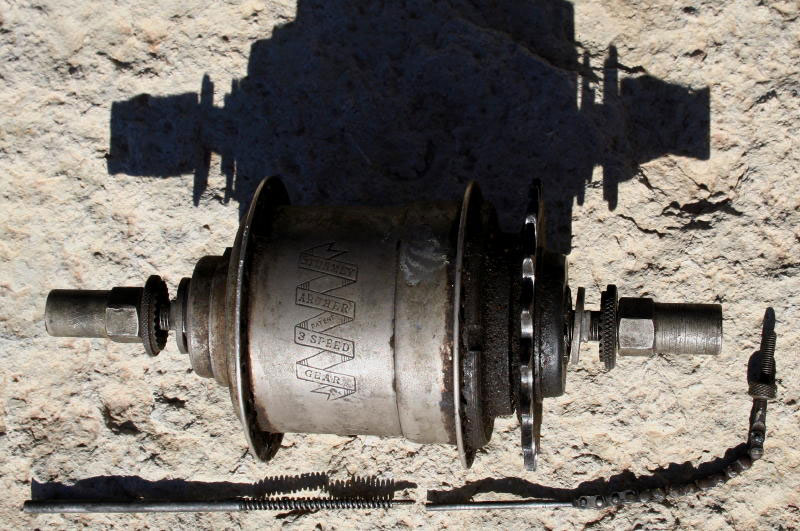 |
|
|
|
|
Current
Classics Photo Gallery - Cross Bike
Photo Gallery
Single Speed Garage Photo Gallery
-
Working Bikes & Practical Hardware
